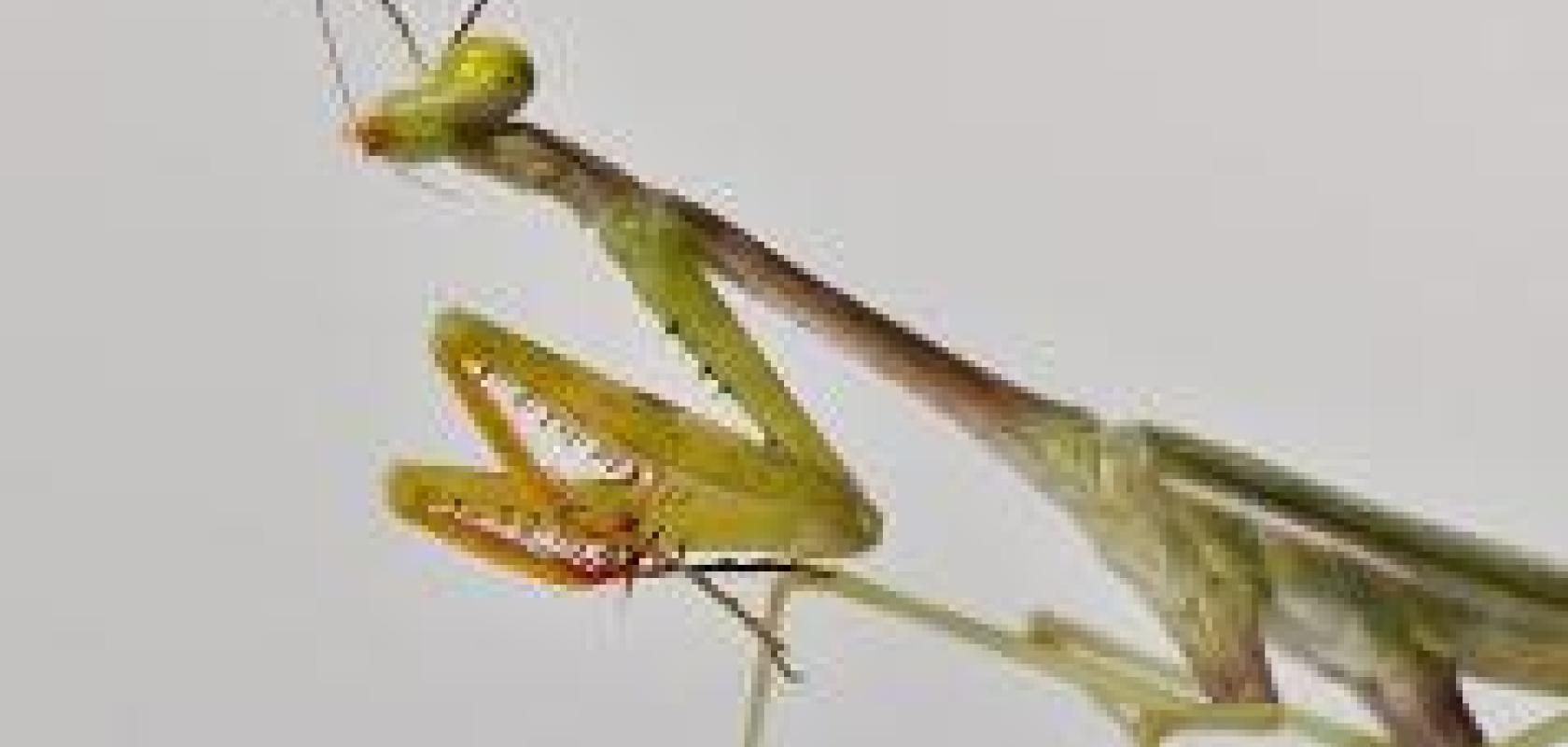Researchers at the University of Cambridge have captured the jump of juvenile praying mantises using high-speed video. By analysing the video, the scientists were able to identify the processes that allow a praying mantis to avoid spinning out of control when jumping.
Most jumping insects like fleas and grasshoppers spin uncontrollably when they jump because of small errors in propulsive force relative to the centre of mass. But juvenile praying mantises can harness the spinning motion, enabling them to jump with accuracy and reposition their body in mid-air to land on the target.
An entire jump, from take-off to landing, lasted around 80 milliseconds, which was captured using a high-speed camera. From the video, the scientists were able to establish that the mantis deliberately injects controlled spin into the jump at the point of take-off. It then manipulates this angular momentum while airborne through intricate rotations of its extremities in order to reposition the body in mid-air, so that it grasps the target with extreme precision.
‘We had assumed spin was bad, but we were wrong – juvenile mantises deliberately create spin and harness it in mid-air to rotate their bodies to land on a target,’ said study author Professor Malcolm Burrows from Cambridge University’s Department of Zoology, who conducted the research with Dr Gregory Sutton from Bristol University.
The study was published in the journal Current Biology.
Further information:


